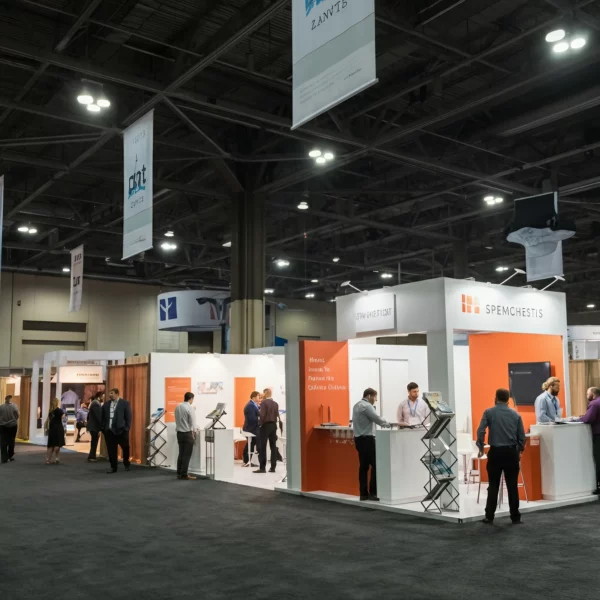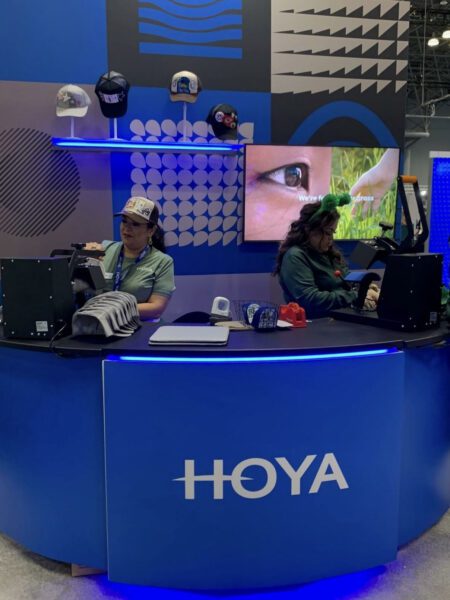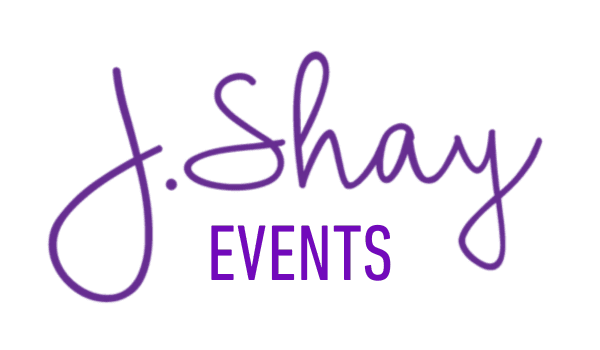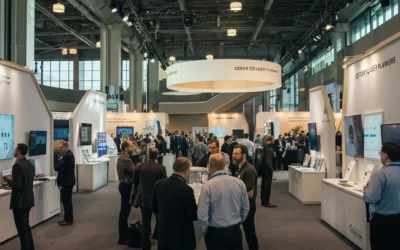Trade shows remain one of the most potent platforms for brand growth—when executed properly. Done right, they offer face time with prospects, visibility in your industry, and measurable lead generation. Done poorly, they become expensive line items with little return.
This guide shows you how to approach trade show event planning and management in 2026—covering booth strategy, logistics, and post-show follow-up—to turn your investment into results.
What Is Trade Show Event Management?
Trade show event management is the end-to-end process of planning, executing, and optimizing your trade show presence. It covers everything from choosing the right show and designing an engaging booth to managing logistics, staff training, and lead follow-up.
The goal is simple: transform foot traffic into qualified leads and real revenue. In today’s market, standing out requires more than visuals—it demands experience, storytelling, and data-driven decision-making.

Step 1: Pre-Show Planning That Sets You Up to Win
Define Clear Goals
Start by setting measurable objectives. Are you targeting lead volume, booked demos, or sales conversions? Use SMART goals (specific, measurable, achievable, relevant, time-bound) to ensure alignment across your team.
Select the Right Trade Shows
Not all shows are created equal. Analyze attendee demographics, industry relevance, and past ROI. Sometimes a smaller, niche trade show delivers higher-quality leads than a massive expo.
Build a Realistic Budget
Expect total trade show costs to run roughly 3–4× your booth space cost. That includes design, shipping, travel, and promotions. Always include a contingency buffer of 10–15% for last-minute changes.
Create a Booth Experience, Not Just a Booth
Your booth should function like a live stage. Plan micro-events, live demos, or Q&A sessions that encourage engagement and keep attendees on-site longer.

Step 2: Designing a Booth That Draws and Converts
Interactive Is the New Attractive
Static signage is outdated. Integrate interactive technology like AR, VR, or touchscreen experiences. These elements increase dwell time and create memorable brand moments.
Clarity and Cohesion
Your value proposition should be visible and simple. Within three seconds, visitors should know who you are and what you offer. Align your lighting, messaging, and visuals for maximum clarity.
Flow and Functionality
Open layouts invite visitors. Avoid clutter, designate clear zones for demos and discussions, and ensure staff are positioned to welcome—not block—traffic.
Add a “Wow” Factor
Include one unexpected feature—such as a branded photo zone, live mini-performance, or immersive product journey—that leaves attendees talking long after they’ve left your booth.
Step 3: Logistics and Operations
Flawless Execution Starts Early
Hire logistics professionals experienced in trade show setup and freight handling. Delays at customs or damaged shipments can derail months of planning. Track every delivery closely.
Train and Empower Your Booth Team
Your staff are your frontline brand ambassadors. Equip them with clear scripts, qualifying questions, and guidelines for engaging attendees. Every conversation should have intent.
Have a Contingency Plan
Bring a show survival kit—extension cords, power strips, signage repair materials, spare tech, and backup collateral. Unexpected issues are common; preparation prevents panic.
Monitor and Adapt in Real Time
Assign one person to observe booth traffic and adjust flow as needed. The best trade show event managers are constantly adapting on-site to improve engagement.

Step 4: Lead Capture and Follow-Up — The Real ROI
Smarter Lead Capture
Use QR codes, digital scanners, or short forms to capture leads. Tag each contact with notes about interests or product discussions for more personalized follow-up.
Segment Leads Quickly
Post-show, upload leads into your CRM immediately. Sort them by interest level, purchase timeline, and industry. This allows for timely, relevant outreach.
Personalized Post-Show Outreach
Generic “Thanks for stopping by” emails don’t convert. Reference the booth conversation or demo they attended, and offer a relevant next step—such as a case study or demo follow-up.
Measure, Analyze, Improve
Go beyond counting leads. Track how many converted into sales opportunities or deals. Calculate cost per qualified lead and overall trade show ROI to refine your future strategy.
Human Insights: The X-Factor in Trade Show Success
-
Tell stories, not specs. People connect with narrative. Tie your brand into a relatable story or customer success journey.
-
Energy wins attention. Train staff to stay energized throughout the day—slumps after lunch are common and costly.
-
Speed matters. Fast follow-up can double conversion rates. Don’t wait until next week—reach out within 48 hours.
-
Iterate constantly. Hold a post-show review. Document what worked, what didn’t, and what should evolve for next time.

Why Trade Shows Are Still a Top ROI Channel
Even in a digital-first world, in-person connection is unmatched. Trade shows provide concentrated visibility, accelerate trust, and generate tangible sales opportunities.
When trade show event planning is executed strategically—with great design, strong messaging, and disciplined follow-up—it becomes one of the highest-ROI investments in your marketing mix.
Ready to Elevate Your Next Trade Show?
At J.Shay Event Solutions, we specialize in corporate event management and trade show planning that turns your presence into performance. From concept to execution, we handle every detail—so your team can focus on closing deals, not chasing logistics.
Contact us today to start planning your next high-impact trade show event.
You might also like…
Event Registration Software & Corporate Event Registration Solutions That Transform the Attendee Experience
The Most Reliable Event Registration Software for Corporate Conferences, Trade Shows, &...
Corporate Event Registration Solutions: Onsite Tools, Support, and Strategies Every Planner Needs
Corporate event planners face increased pressure to deliver flawless attendee experiences. Whether...
How to Plan a Successful User Conference: A Full Guide to Conference Planning and Management
1) Start with hypotheses — treat the event like an experiment Stop thinking “attendance” as your...




